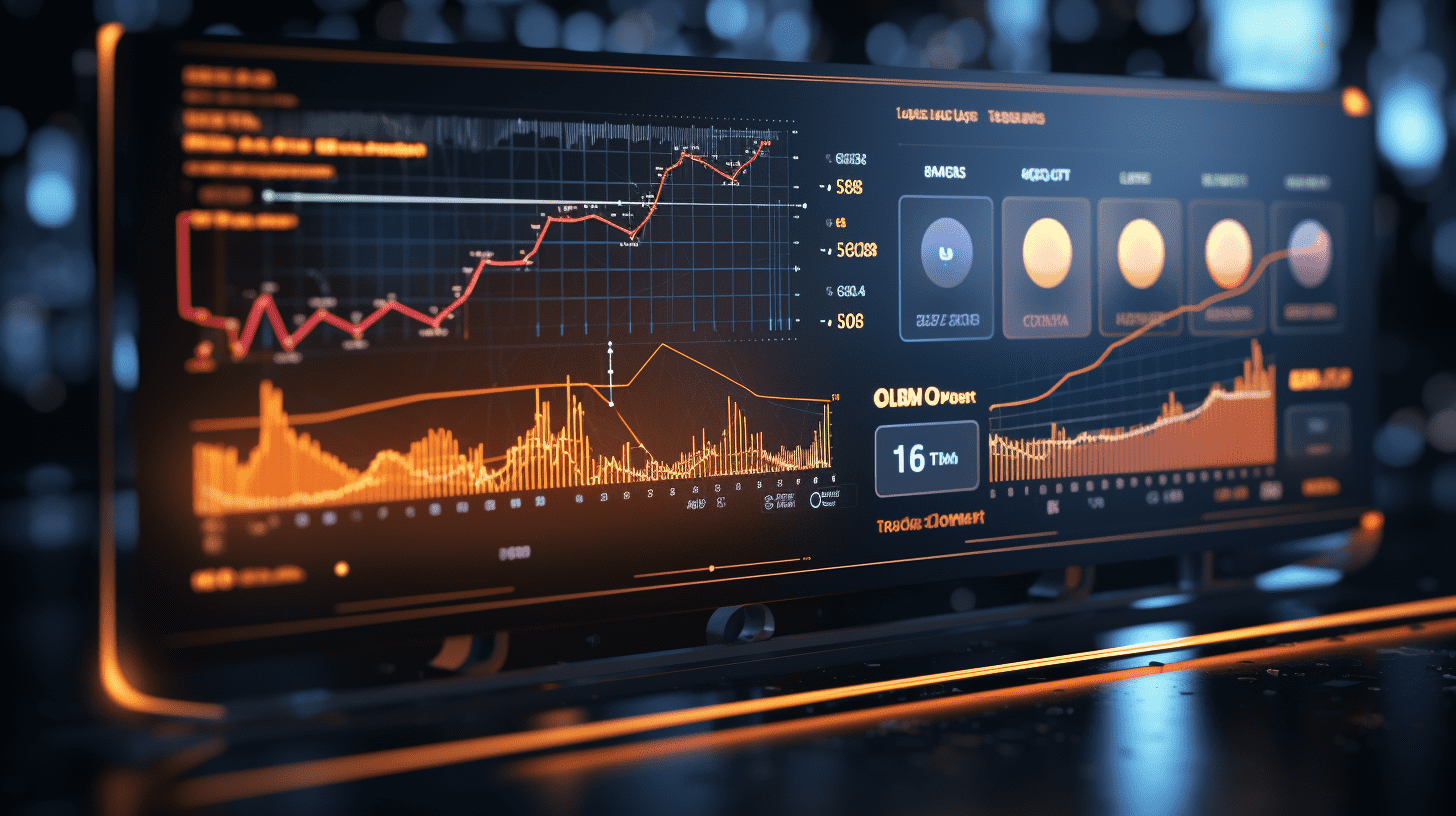Soochow: Top 10 "Inconsistencies" Expected in 2025.
Dongwu Securities stated that if institutional funds enter the market substantially or regain pricing power in the market, core assets are expected to significantly outperform the index.
Soochow releases its top ten "inconsistent" expectations for 2025. Among them, it is mentioned that if the expected discrepancy between real estate sales and prices hitting bottom and rebounding is realized, institutions are concerned that improvements will appear in the speed of economic recovery, the elasticity of inflation leading to increased corporate profits, and the leverage of credit expansion. On one hand, the risk preference of institutional funds can be restored, and on the other hand, the profit growth of listed companies is expected to rise accordingly. With speculative and retail funds relatively active, and the average turnover maintained at over trillions, the entry of institutional funds is expected to further enhance market liquidity. Currently, institutional funds account for about 3 to 6 times the turnover of speculative and retail funds, compared to around 15-35 times in 2020-21. If institutional funds enter the market significantly, or regain pricing power in the market, core assets are expected to significantly outperform the index.
1. Tariffs will not lead to significant inflation in the United States. Many academic institutions believe that Trump's tariff policy will significantly increase inflation in the United States, with PIIE estimating that from 2025-27, the year-on-year CPI growth rate in the United States will be 1.340.530.07% higher than in the baseline scenario. In fact, the year-on-year CPI growth rate in the United States fell from 2.07% to 1.71% between 2018-2019. The total profit margin of the foreign trade industry chain is composed of US CPI, US PPI, exchange rate, and foreign PPI, corresponding to US consumers, US traders, foreign traders, and foreign producers. Between 2018-2019, US tariffs on China increased from 3.1% to 17.9% to 21%, during which US trade PPI, exchange rate, and China PPI each accounted for 2.2%, 9.2%, and 5.9% of the impact, while US residents only bore 0.6%. In addition, since core goods account for a low percentage in CPI, and the demand impact of tariffs leads to a decline in oil prices, this was also a factor in the decline in the CPI in 2018-2019.
2. US inflation falls to 2%. The December FOMC shows that the Fed has raised its 2025 US PCE growth forecast from 2.1% to 2.5%, while overseas analysts unanimously expect the year-on-year CPI growth rate in the US for 2025 Q1-Q4 to be 2.52.42.62.5%. Market and Fed's cautious expectations for inflation in 2025 mainly come from Trump's new policy. However, in terms of magnitude, after the implementation of Trump's tax cuts and tariff policy in 2018, there was no significant increase in US inflation. Looking at the timing, if Trump's tariffs, immigration, and tax cut policies are implemented late, there will be no significant upward risk in US inflation in the short term. On the contrary, Soochow believes that driven by base effects, oil prices, and housing inflation, the year-on-year CPI growth rate in the US is expected to continue to decline in January-April 2025, reaching a bottom of 2.0% in April.
3. The Federal Reserve significantly cuts interest rates in 25H1. The December FOMC meeting's dot plot shows that there will be two rate cuts in 2025, and the market expects these two rate cuts to materialize in 25H2, mainly due to concerns about Trump's new policy. Soochow believes that due to the significant decline in non-farm and inflation data, the Fed's 50bps rate cut in 2025 is expected to materialize in 25H1. There is a 76% probability that after Trump took office, he will immediately expel illegal immigrants, which will have a significant short-term impact on the US labor market (although it is difficult for Trump to completely expel illegal immigrants, it is easy to make them disappear from the labor market), and the monthly increase in non-farm employment in the US is expected to sharply decrease from the current 15-20,000 to 5,000. After illegal immigrants exit the labor market, US companies will rehire domestic workers, but there is a lag in this process, so wage inflation stickiness may appear in 25H2.
4. Chinese exports exceed expectations. Considering that: (1) Trump's commitment to impose tariffs on China of over 60% in 2025 may be difficult to fully implement, and there may be maximum pushback; (2) After the US imposed tariffs in 2018, China maintained its export share through methods such as transshipment trade and business going global, reducing its dependence on US exports significantly, with the diversification of exports accelerating; (3) If the Fed significantly cuts interest rates in the first half of 2025, and tax cut policies successfully take effect in 2025, the willingness of wholesalers to replenish inventory is expected to be significantly restored, and the inventory replenishment phase in the US may continue until the second half of 2025. China's exports are expected to continue to exceed expectations.
5. Chinese real estate market sales and prices hit bottom and rebound. Since October, the real estate market has shown three signs of "bottoming out and stabilizing". First, sales have returned to growth; second, house prices in first-tier cities have risen; third, building material prices have risen. From high-frequency data, real estate sales in December are still improving. Therefore, if the consistent expectations of market improvement in recent months continue to strengthen, the bottoming out and rebound of the real estate market in 2025 would be the biggest expectation discrepancy in the domestic economy. If real estate sales and prices hit bottom and rebound in 2025, many expectations for the domestic economy and market will change. First, the wealth effect will improve, helping to stimulate consumption. Second, the expansion of domestic demand brought about by real estate will offset external demand pressure, reducing the space for other policies. Third, the recovery of the real estate market will bring about improvements in prices, with the nominal GDP growth rate once again exceeding the real GDP growth rate, becoming another expectation discrepancy in the domestic economy.
6. Significant increase in Chinese inflation rate. Consistent expectations from Wind show that the year-on-year CPI in 2025 is expected to be 0.5%, and the PPI is expected to be -1.5%, weighted according to 70% CPI and 30% PPI, the fit GDPP index is expected to be around -0.1%. However, if the previous expected discrepancy is realized, i.e. if real estate sales and prices hit bottom and rebound, we will also see a significant increase in the inflation rate in China, and the GDPP index will change from negative to positive. For the domestic economy, rising prices will bring about three significant improvements: first, improvement in corporate profits; second, improved employment for residents; third, improved government revenue, providing more room for maneuvering in finance.
7. Renminbi's exchange rate strengthens against the US dollar. (1) Looking at the factors influencing the rise and fall of the US dollar index, if France and Germany successfully form a new government in 2025 and pass their budget smoothly, political tensions in the Eurozone ease and the major economies in the Eurozone stabilize their finances, and if the European Central Bank further cuts interest rates...Stable euro fundamentals may improve the market sentiment for a depreciating euro exchange rate, pushing the euro to dollar exchange rate higher, and weakening the US dollar index. Despite the pressure from the "strong dollar" since November 2024, the renminbi has experienced some depreciation against the dollar, but based on the trading rules of the interbank market, the spot exchange rate of the renminbi has not reached the "lower limit." China's export fundamentals remain solid in 2025, with the renminbi accounting for an increasing proportion of import and export transactions, which may alleviate concerns about the US imposing tariffs. Once non-US currencies such as the euro strengthen and the US dollar index weakens, the renminbi may return to an appreciation trend against the dollar.Eight, Central Debt Interest Rates Hit Bottom. (1) Under the influence of various policies such as "debt-to-equity swaps" and interest rate cuts and reserve requirement reductions, the year-on-year growth rate of M1 in 2025 may turn positive and continue to rise, indicating an improvement in "economic vitality". Historically, the increase in M1 growth leads the increase in inflation rates. When "re-inflation" exceeds expectations in the Chinese economy in 2025, monetary policy may proactively tighten liquidity, and central debt interest rates may rise as a result of improvements in inflation expectations, increased risk appetite, and the proactive return to neutral monetary policy. (2) In the initial stage of "debt-to-equity swaps," the balance of financial institution loans may be influenced by debt substitution, leading to either low growth or negative growth, pushing market interest rates down. However, "debt-to-equity swaps" free up space for local fiscal support for investments and consumption in the real economy, which actually benefits the stabilization of the economic fundamentals. At the same time, banks' asset quality improves due to "debt-to-equity swaps," expanding the potential space for loan issuance. If the progress of "debt-to-equity swaps" accelerates and realizes its stable growth effects in 2025, central debt interest rates may face the risk of a mid-term bottoming out and rebound.
Nine, People's Bank of China Directly Purchases A-share ETFs. The consistent expectation of incremental funds in 2025 is focused on the slow and steady inflow of long-term funds, institutional funds waiting for fundamental verification to enter the market, and marginal increments mainly coming from individual and speculative investments. Based on the policy tone of "unconventional countercyclical adjustment" and the expected "moderate easing" by the People's Bank of China in 2025, as well as the innovation in liquidity tools in the capital market since 2024, Soochow believes that the direct purchase of stock ETFs by the central bank may create expectations in the financial sector. Referring to overseas experiences, the current policy environment basically meets the conditions for implementing direct purchases. In order to further enhance the stability of the capital market and regulate market liquidity, in cooperation with SFISF, the expected implementation of the central bank purchasing ETFs may be more targeted, such as purchasing ETFs with a higher proportion of research and development funding, supporting ETFs with a higher proportion of new productive enterprises, and precisely supporting the new direction of economic transition to encourage companies to increase investment in specific areas.
Ten, Core Assets Significantly Outperform the Index. Based on the assumptions in Soochow's expectation differences five and six, if the expectations of a bottoming out rebound in real estate sales and prices come true, concerns of institutions will see noticeable improvements in the speed of economic recovery, the elasticity of profit growth due to inflation recovery, and the leverage of credit expansion. On one hand, the risk appetite of institutional funds can be restored, and on the other hand, the profit growth of listed companies is expected to rebound. With active speculative and retail funds and average transaction amounts staying above trillions, the entry of institutional funds is expected to further enhance market liquidity. Currently, the proportion of institutional funds trading volume is about 3 to 6 times that of speculative and retail investors, while it was approximately 15 to 35 times around 2020-2021. If institutional funds significantly enter the market or regain pricing power, core assets are expected to significantly outperform the index.
Related Articles

Open Source Securities: Changes to this round of spring excitement after 8 consecutive gains

Huajin Securities: The spring market in January next year may continue, and technology is leading in some cyclical industries such as CKH HOLDINGS.

New stock prospects | 90% of revenue comes from the United States, how long can Universal Horticulture continue to benefit from going global?
Open Source Securities: Changes to this round of spring excitement after 8 consecutive gains

Huajin Securities: The spring market in January next year may continue, and technology is leading in some cyclical industries such as CKH HOLDINGS.

New stock prospects | 90% of revenue comes from the United States, how long can Universal Horticulture continue to benefit from going global?

RECOMMEND

Not Just “Power Shortages,” Delays Will Become The Key Theme For U.S. Data Centers In 2026
26/12/2025

Hang Seng Index Rises 33% This Year, Best Five‑Year Performance; Multiple Institutions Forecast Breakthrough Above 30,000 Next Year
26/12/2025

Gold Rally Has Further To Run, JPMorgan Bullish: Prices Could Reach USD 5,055 By Year‑End 2026
26/12/2025


